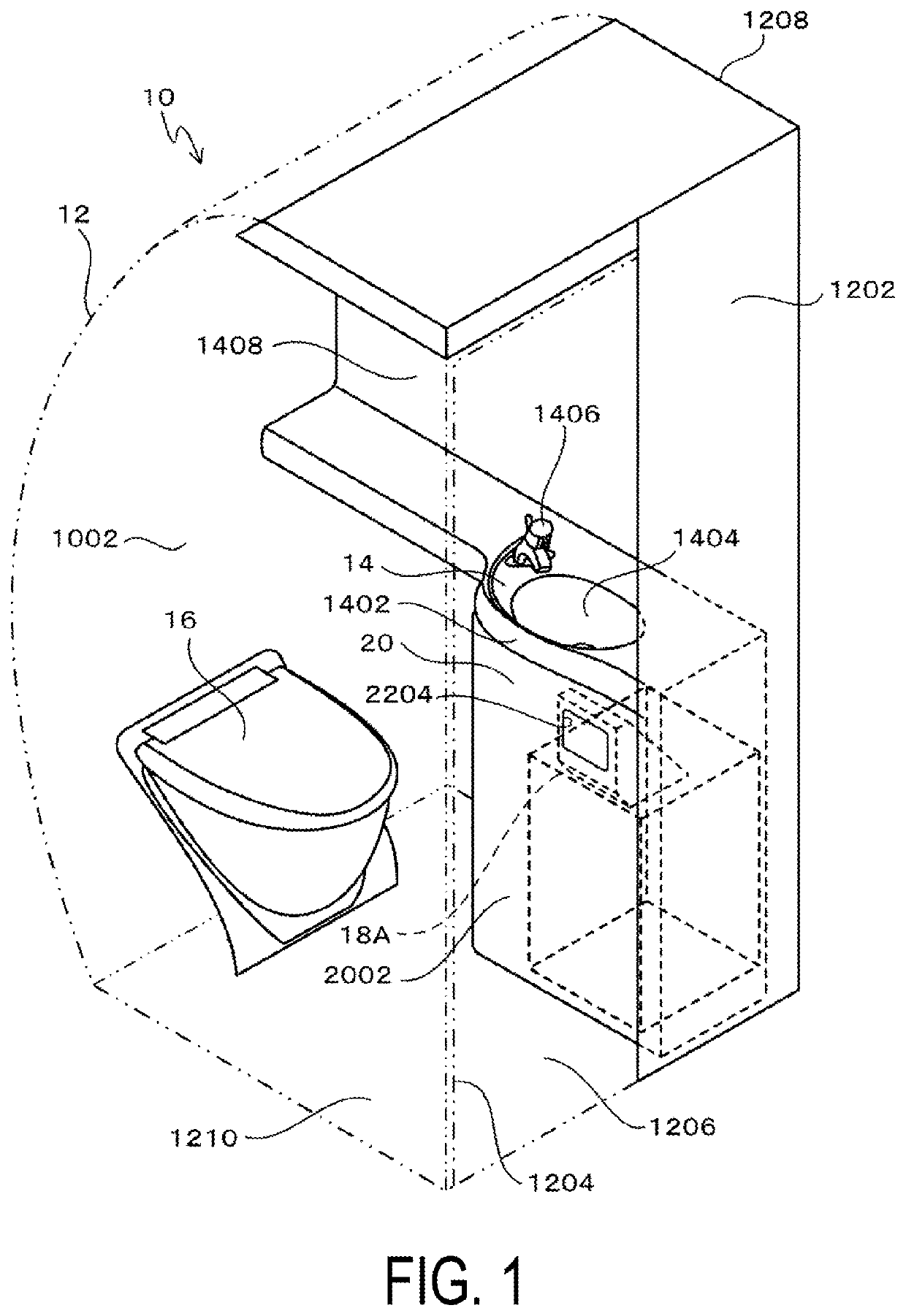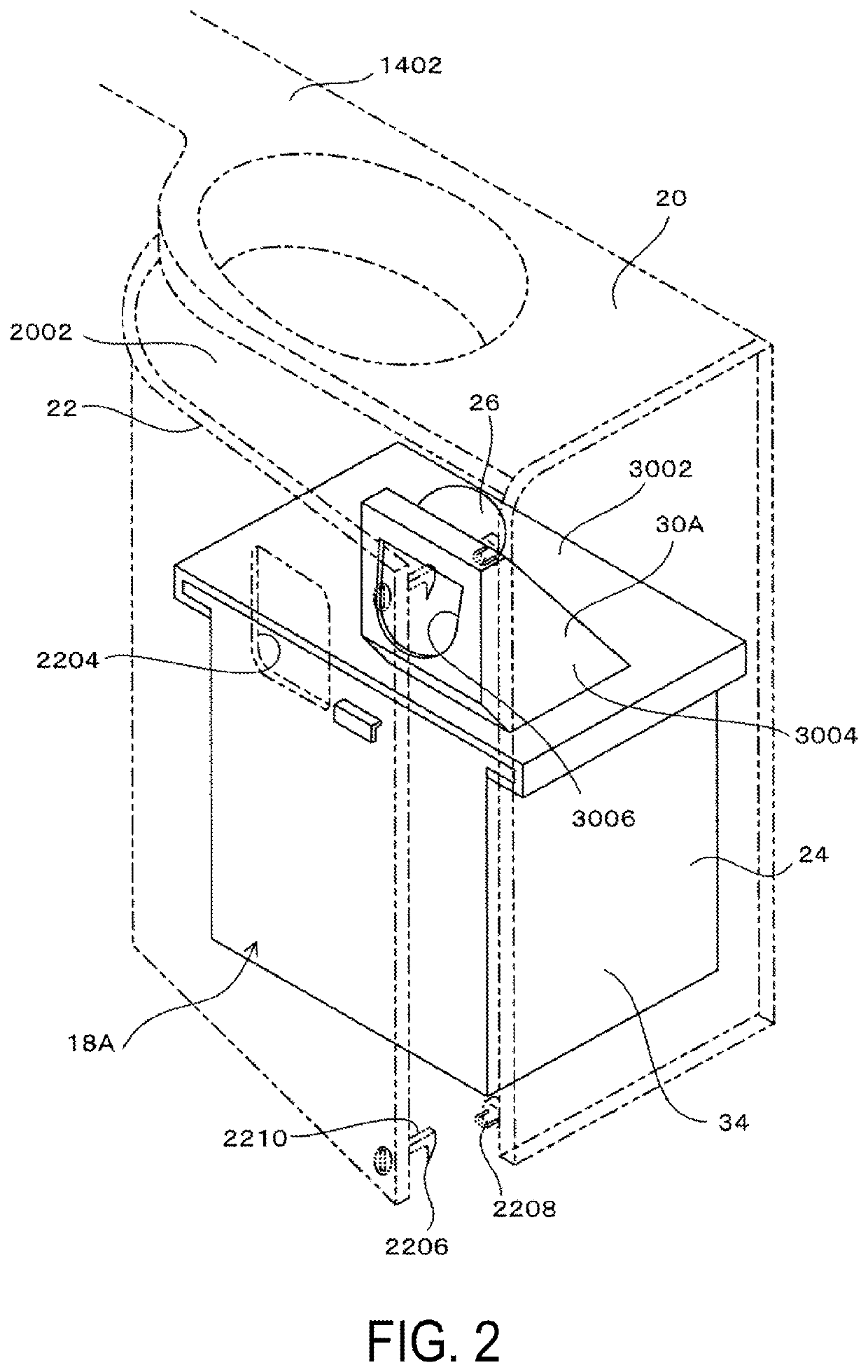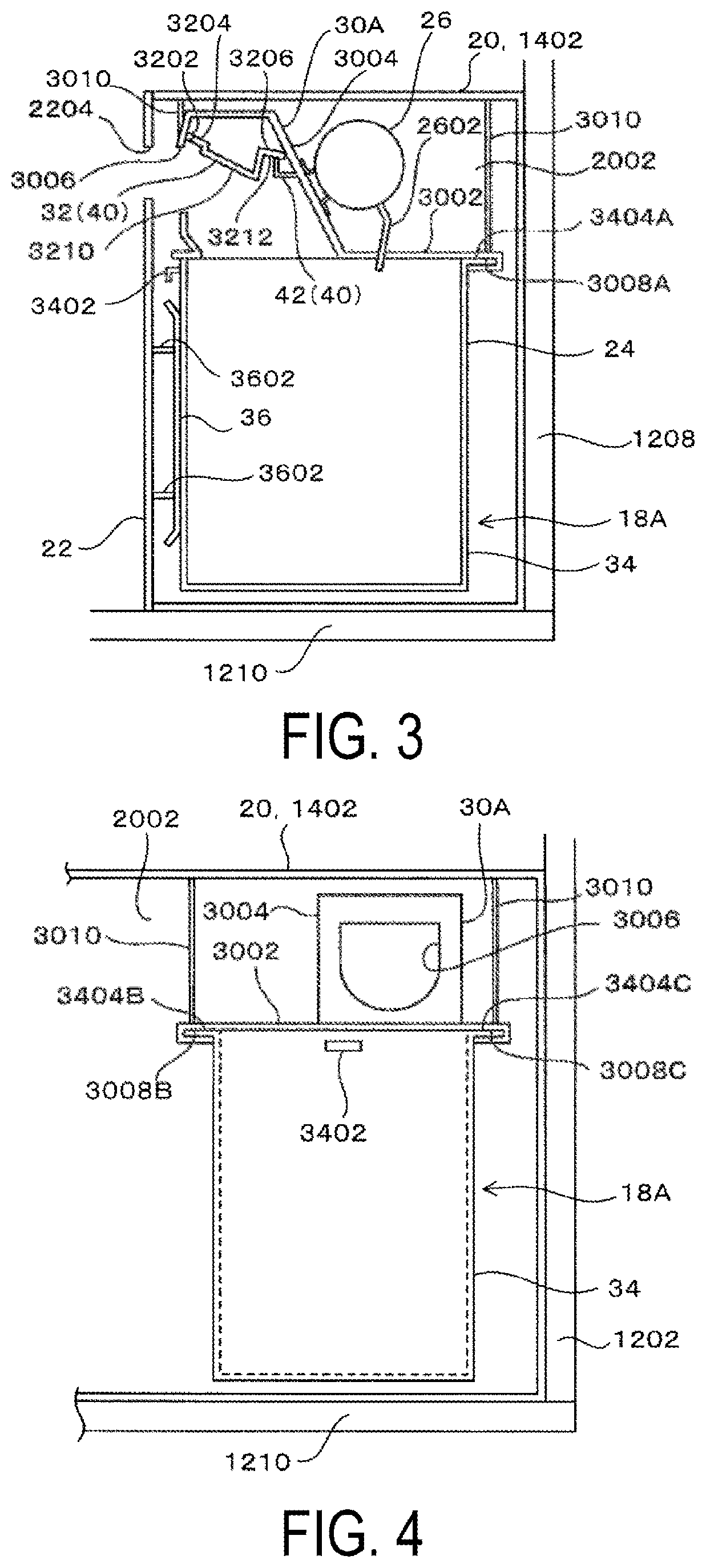Trash Can Device for Aircraft Lavatory Unit
a technology trash cans, which is applied in the field of trash can devices for aircraft lavatory units, can solve the problems of not meeting the fire containment requirements specified in united states federal aviation regulations, and unsatisfactory for certain peopl
- Summary
- Abstract
- Description
- Claims
- Application Information
AI Technical Summary
Benefits of technology
Problems solved by technology
Method used
Image
Examples
first embodiment
[0040]Embodiments of the present technology will be described with reference to the drawings.
[0041]First, a lavatory unit 10 according to a first embodiment will be described with reference to FIGS. 1 to 16.
[0042]As illustrated in FIG. 1, the lavatory unit 10 has a structural frame 12 which is installed on the floor of an aircraft, and a lavatory 1002 is formed inside the structural frame 12.
[0043]A front surface wall 1202 of the lavatory 1002 is provided with an entrance 1204, and the entrance 1204 is opened and closed by a door 1206.
[0044]A sink 14, a toilet bowl 16, and a trash can device 18A are disposed in the lavatory 1002.
[0045]The toilet bowl 16 is disposed in front of a rear surface wall. The sink 14 is provided on the inner side of a side wall 1208 and on the upper surface of a base 20 disposed on a bottom wall (floor) 1210 of the lavatory 1002. The sink 14 includes a counter 1402, a sink basin 1404, a faucet 1406, and a mirror 1408.
[0046]As illustrated in FIG. 2, a storag...
PUM
 Login to View More
Login to View More Abstract
Description
Claims
Application Information
 Login to View More
Login to View More - R&D
- Intellectual Property
- Life Sciences
- Materials
- Tech Scout
- Unparalleled Data Quality
- Higher Quality Content
- 60% Fewer Hallucinations
Browse by: Latest US Patents, China's latest patents, Technical Efficacy Thesaurus, Application Domain, Technology Topic, Popular Technical Reports.
© 2025 PatSnap. All rights reserved.Legal|Privacy policy|Modern Slavery Act Transparency Statement|Sitemap|About US| Contact US: help@patsnap.com



